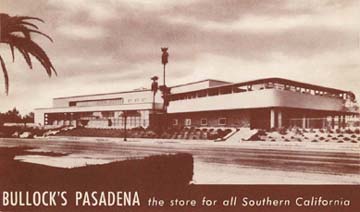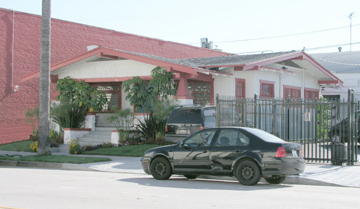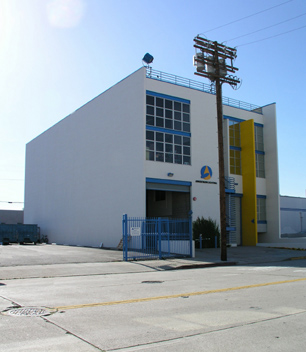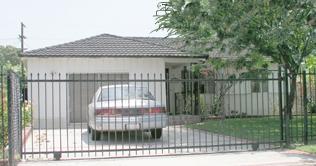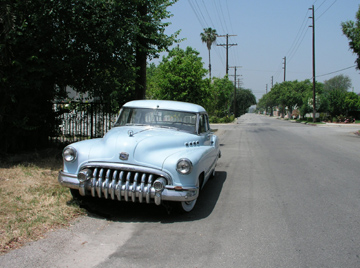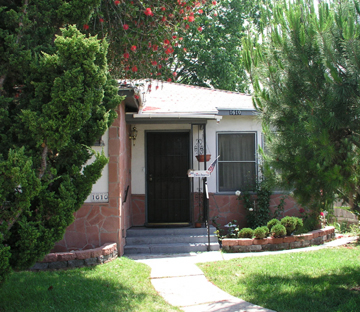As a service to our readers, I should like to call attention to two buildings that are not long for this world. Here is one:
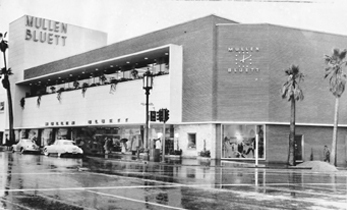
Stiles Clements’ Mullen & Bluett building, 1949, 5570 Wilshire, built in the Late Moderne, a style that typified the optimistic postwar building boom. Note the sexy geometric volumes and eyebrow canopy. Mullen & Bluett is a perfect example of the Miracle Mile’s auto-oriented “linear downtown,†as Reyner Banham put it. Think Wayne McAllister’s Bob’s Big Boy in Burbank or Wurdeman & Becket’s Bullocks Pasadena. Legacy Partners of Irvine are razing this building and replacing it with a 197-unit apartment/retail thingy that resembles the lowest common denominator of faux-Miami Deco. (Their next project is enveloping the Art Deco Desmond’s tower in nine stories of apartments.) I say go check M&B’s roman brick & flagstone façade and copper beveled display windows while you still can-it’s too late to admire Clements’ 1936 masterpiece of streamline KEHE building, recently demolished by LAUSD, or his equally unbelievable Coulter’s, once across the street.
This is the Bach Auricon Inc. building, 1954, 6900 block of Romaine at 900 block of Mansfield:
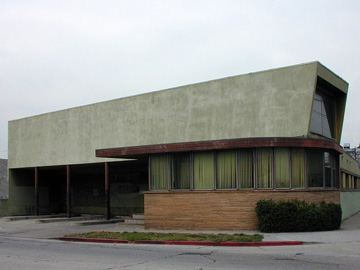
BA are incredibly important in the history of filmmaking, especially as regards TV newsreels and documentaries. Auricon was a semi-self-blimped single system that recorded optical or magnetic sound on film, allowing our cinema-verité pioneers to shoot with a lightweight, maneuverable, quiet camera. Logos for Modulite, Cine-Voice, Datasync and Filmagnetic are still on this building; rumors of its impending demolition abound. This is correct, original Old Hollywood in the way a thousand trips along our current Hollywood Boulevard can never be.
(A photographic addtion, in reference to the posted comment:)
